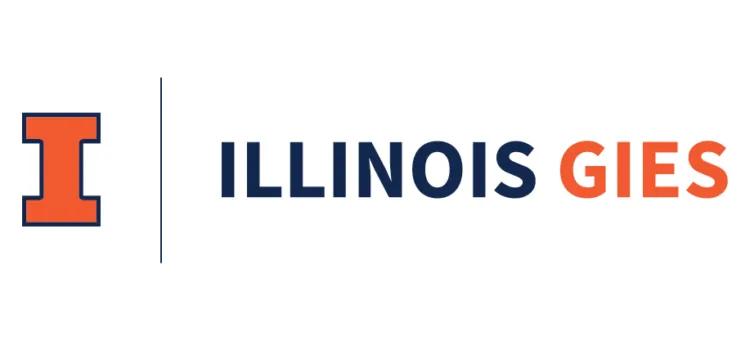
You’ve heard us say it time and time again: There is no perfect ranking of business schools or programs. The best we can hope for is a ranking that strives to do better.
And that’s just what we’ve done since our first ranking of undergraduate business schools in 2016. Throughout the years, we’ve consulted with deans and directors for suggestions and adjusted our approach when merited.
The basic framework has not changed: A ranking of the top undergraduate business schools based on three equally-weighted categories – Admission Standards, Academic Experience, and Career Outcomes. Each category accounts for one third of the final ranking score. (See 2024’s ranking of the best undergraduate business programs here.)
A CHANGE TO LAST YEAR’S METHODOLOGY
Through the years, we’ve tweaked the metrics and weights that go into calculating the three main categories. We believe any endeavor to evaluate higher education institutions must evolve with the times.
The only change we made to this year’s methodology was to include three years’ worth of alumni data to calculate a school’s Academic Experience category. But a change in last year’s methodology that impacted several schools has been carried forward this year.
For the first six years of our undergraduate business school ranking, we only used one year’s worth of alumni data collected through our alumni survey. Schools that did not meet our minimum response threshold of 10% were not given any credit for the alumni responses, which significantly lowered their overall ranking. In some cases, this caused large swings in ranking results from one year to the next, depending on whether a particular graduating class was happy or unhappy with their experience or whether a school was able to meet that 10% threshold. Schools that just missed the threshold were penalized the same as schools that were well below.
Take Carnegie Mellon University’s Tepper School of Business, for example. It fell from No. 8 in our 2021 ranking all the way to 83rd in 2022 because it failed to meet the alumni response threshold in that ranking year. But nobody can argue that Tepper isn’t an excellent business school, consistently scoring highly in Career Outcomes and Admission Standards.
To help mitigate this and provide a more accurate reflection of a school’s program for students and parents, we made a couple of changes to last year’s methodology: First, we awarded last year’s alumni data on a sliding scale based on their response rate. In other words, schools that met the 10% threshold were given credit for 100% of their alumni data in our methodology. Schools that achieved a 9.2% response rate were given credit for 92% of alumni responses, schools that got a 7.5% response rate were given 75% and so on.
The second change we made last year was averaging together two years’ worth of alumni responses to our surveys to further help mitigate the swings that can come from an individual graduating class. Plus, the average helps better reflect alumni experience overall, especially for schools that don’t meet the threshold in a particular year.
2024’s RANKING METHODOLOGY
Carnegie Mellon Tepper was one of 12 schools that did not meet the alumni response threshold for the 2022 ranking, and so did not get credit for the alumni survey. Each of these schools was dinged for the 2023 ranking when averaging the two years’ worth of alumni data because they had no alumni results from the previous year, based on the methodology at that time. As a result, Tepper rose 37 points to No. 46 in 2023 after meeting its alumni response threshold. However, it and the other schools that did not meet the 2022 alumni survey threshold were more harshly penalized than schools that did not meet the threshold in 2023 when they were given partial credit on the sliding scale.
For the 2024 ranking, we added one more year to alumni survey data in order to provide a better reflection of the students experience based on a more robust data set – three graduating classes instead of two. This will be our methodology going forward.
Tepper rose another 17 points in the overall ranking to No. 29 after meeting alumni threshold for the second straight year.
We at Poets&Quants acknowledge a caveat to this methodological change. While three years of alumni data is a better representation of student experience than two, building upon last year’s methodology means that those same 12 schools were still affected by failing to meet the alumni survey threshold in 2022’s ranking. We did this to remain consistent in the way we averaged the alumni scores last year and produce a ranking that was better reflective of last year’s methodology.
However, if we had averaged just two years of alumni data this year, Carnegie Mellon would get full credit for both years, and it would rank No. 12 overall instead of No. 29 – a result more expected for a school of its caliber. William & Mary Mason School of Business would have ranked 20th (compared to 48th) and University of Utah Eccles School of business would have ranked 75th (compared to 84th).
No ranking result is ever perfect, but we do our best to develop a list that gives prospective students and parents the most information on which to make their school decisions. In next year’s ranking, we will use three years of alumni data again, but time will have phased out 2022’s ranking alumni data. All schools will be measured on the methodological change from last year’s ranking that applies alumni scores on a sliding scale of their response threshold.
Below are the metrics and weights included in all three ranking categories for the 2024 ranking of undergraduate business schools.
ADMISSION STANDARDS (33.3%)
The quality of the incoming students is an important factor in judging higher education institutions. Learning is not based solely on the quality of your professors, but on the quality of your classmates as well. That’s why we count a school’s admission standards as a third of the final ranking score.
Admissions data is mostly gathered through our institutional survey that each school completed between July and December of 2023. However, two admission metrics are collected through our alumni survey because fewer and fewer schools collect the data themselves: Percent of alumni who were National Merit Scholar finalists or semifinalists and the percent of alumni who finished in the top 10% of their high school classes.
Like the previous two years, only 10% of weight within the admissions category was given to average SAT scores while acceptance rate was given a weight of 30%. Last year, we stopped using the average high school GPA of the latest enrolling class based on feedback from school administrators and deans and replaced it with diversity data from the entering class. We did the same this year, giving the diversity metric a weight of 15%.
Admission Standards metrics (100 possible points):
- Acceptance rate (30%)
- Percent of alumni reporting finishing in the top 10% of their high school class, as reported on the alumni survey (30%)
- Percent of alumni reporting being a National Merit Scholar finalist or semifinalist, as reported on the alumni survey (15%)
- Diversity average: Average percentage of first-generation college students, underrepresented minorities, international students, and women (15%)
- Average SAT/ACT converted to SAT score (10%). We use Princeton Reviews ACT to SAT conversion tool when the majority of students report ACT scores.
CAREER OUTCOMES (33.3%)
One of the biggest factors for students who pursue a business degree is the jobs they can reasonably expect to get after graduation. Summer internships are also an important component to opening the door to a full-time job opportunity.
These two metrics, along with average first-year compensation for graduating seniors, are used to calculate our Career Outcomes category. Data is taken from the institutional survey as reported by the schools themselves.
This year, we again included the average of the past two years of data.
Career Outcomes metrics (100 possible points)
- Percent of Class of 2022 and 2023 job-seeking students who secured full-time employment within 90 days of graduation (50%)
- Average total first year-compensation (as calculated by average salary, average signing bonus, and percent of students getting a signing bonus) for Class of 2022 and 2023 (30%)
- Percent of Class of 2022 and 2023 students who had internships before their senior year (20%)
ACADEMIC EXPERIENCE (33.3%)
Data for our Academic Experience category is taken straight from alumni. Who better to evaluate how well their degree prepared them for life after college?
Our 2024 alumni survey was conducted between June and December of 2023. Surveys were sent to the Class of 2021 (students graduating between July 1, 2020 and June 30, 2021) from every school that we ranked.
To get full credit for the data collected in the alumni survey, we require a 10% or higher response rate from the graduating class. We award schools their alumni data based on a sliding scale reflecting their alumni response rates. For example, a 10% or higher response rate earns 100% of alumni data, a 9.43% response rate earns 94.3% of the total alumni data, and so on.
This year, seven schools did not meet the 10% minimum response threshold and so did not get full credit for their alumni scores. They include Florida International University, Northern Illinois University, Oregon State University, San Diego State University, Texas Tech University (Rawls), University of Akron, and University of Wisconsin-Milwaukee (Lubar).
That compares to 13 schools who didn’t meet the response threshold in 2023.
We included three years’ worth of alumni data (this year and the previous two years). We included two years worth of alumni data in 2023, and the previous six years we only included one year’s worth.
Academic Experience metrics (100 possible points):
- Satisfaction average on 17 core experience questions, each rated on a one-to-ten scale (80%). For the full list of questions and how the Class of 2021 rated their schools on each one, see How Alumni Rate Their Undergraduate Business Degrees.
- “Significant experience” average as defined as a major consulting project, thesis, or other program feature instrumental to their professional development, or a meaningful global immersion (10%)
- Average of students whose first jobs after graduation were in their desired industries and companies (10%)
DON’T MISS THESE STORIES IN OUR 2024 RANKING PACKAGE










